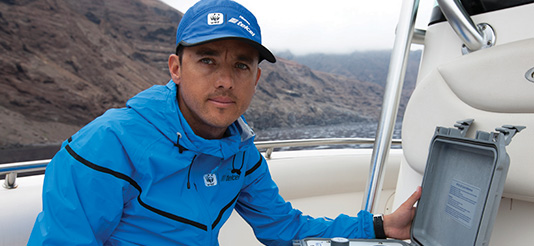
New Fins Attached Co-Authored Publication with Dr. Mauricio Hoyos
July 8, 2020
Behavioural responses of white sharks to specific baits during cage
diving ecotourism
Edgar E. Becerril‑García, Edgar M. Hoyos‑Padilla, Primo Micarelli,
FelipeGalván‑Magaña & Emilio Sperone
This study describes the effect of different baits on the attraction, surface behaviour and conditioning of white sharks Carcharodon carcharias during local ecotourism activities. The sightings, behaviours, and pictures used for photographic identification were obtained during August to November 2012–2014 onboard tourist boats in Guadalupe Island, Mexico. Four types of baits were used: (1) frozen bait; (2) frozen bait and natural chum; (3) fresh fish bait; and (4) mackerel bags. Data were analysed according to sex, maturity and the total of sharks using 6,145 sightings of 121 white sharks. The type of bait showed no significant difference on the effectiveness to attracting sharks. Ethological analysis showed that the type of bait had a significant effect on the shark’s surface behaviour during its interactions with boats. Natural chum and fresh baits showed short term behavioural patterns constituted by increased number of violent interactions with the bait, while the frozen bait did not generate a defined behavioural pattern. Conditioning of white sharks was determined by the number of interactions and the consumption frequency of the bait. Fifty nine percent of sharks (n= 41) showed no conditioning, 36% (n= 25) showed a low risk and only 5% (n= 3) were found to have a high risk of conditioning. The results suggest that current ecotourism has no effect on the conditioning of the white sharks, and that all baits have a similar effectiveness for attracting the sharks. However, a different behavioural pattern was observed when fresh bait and chum were used, which could increase the potential of accidents during ecotourism.
